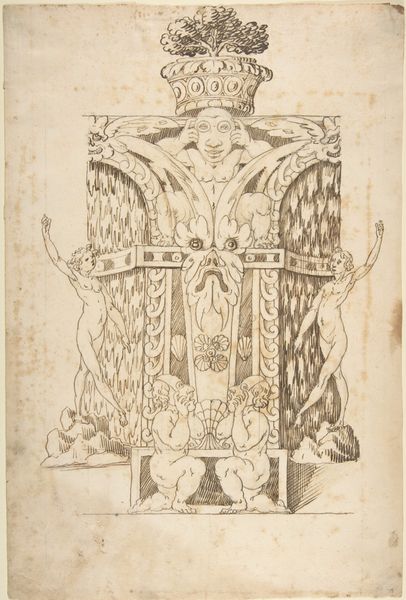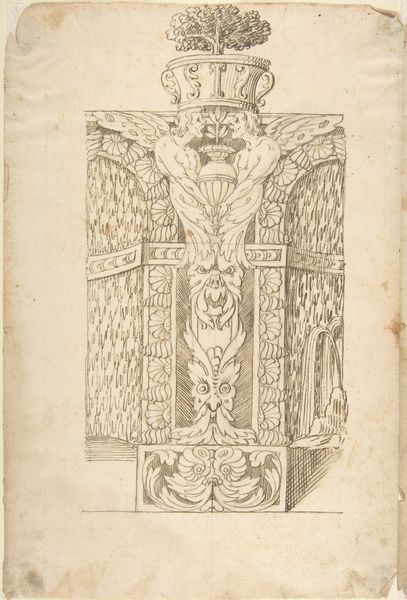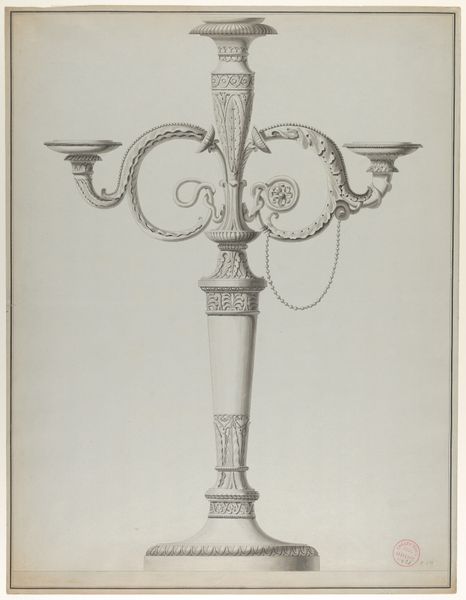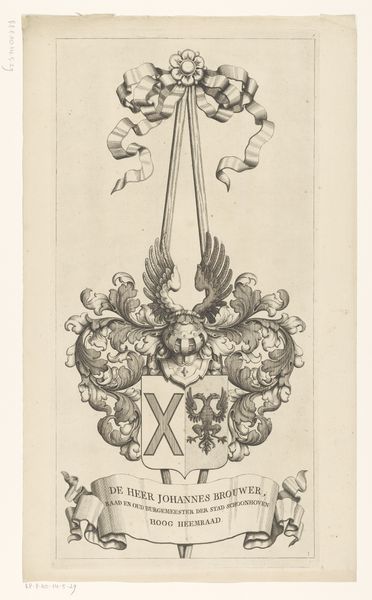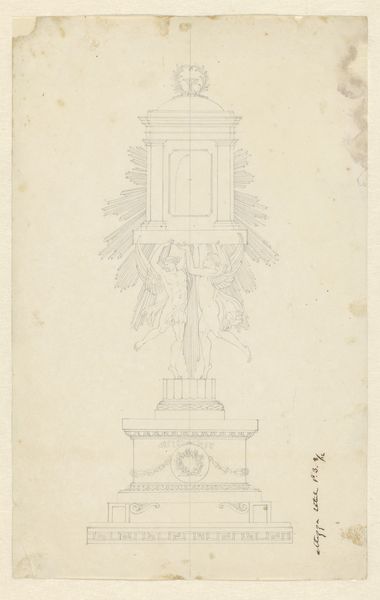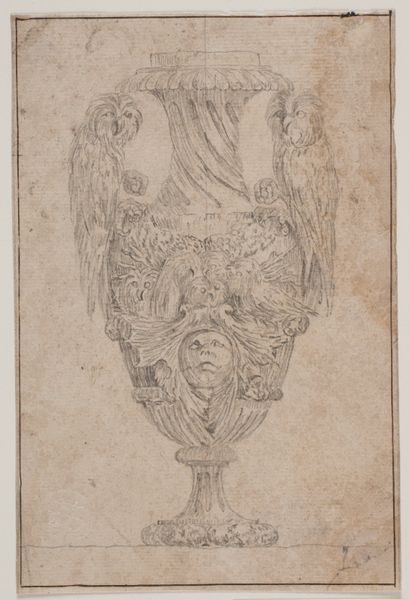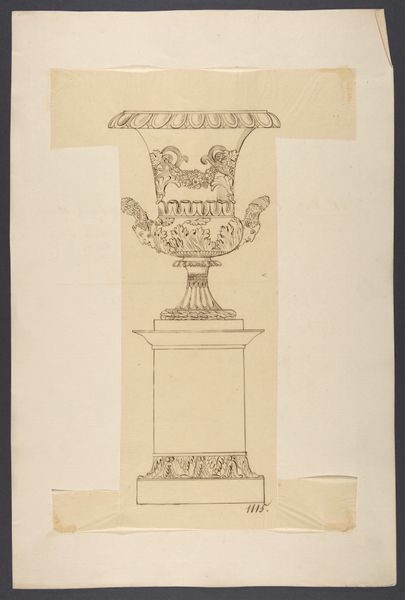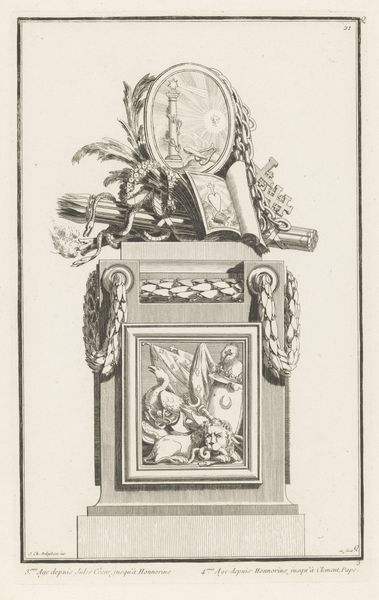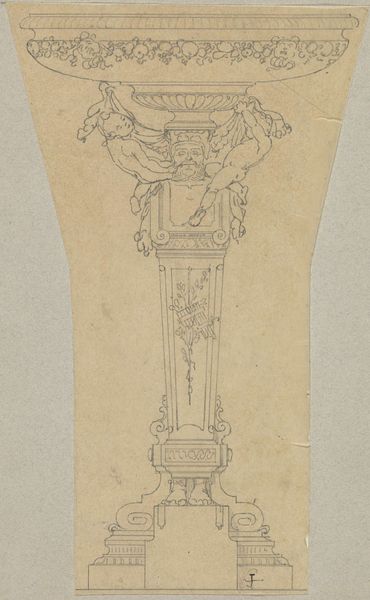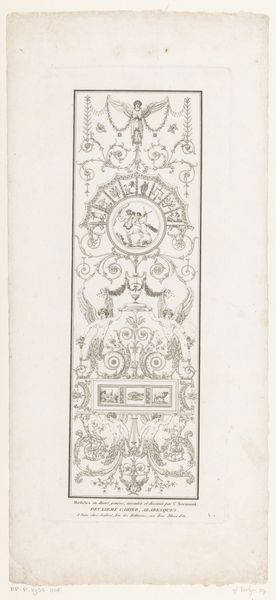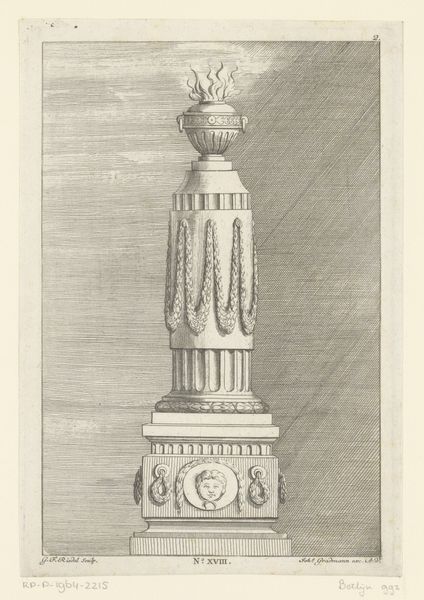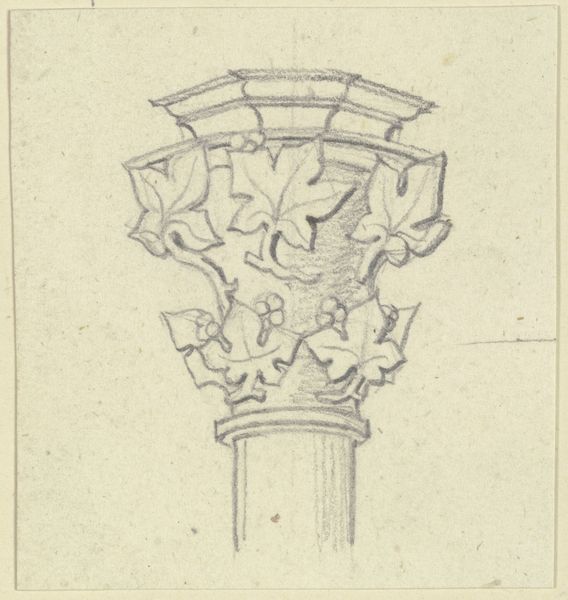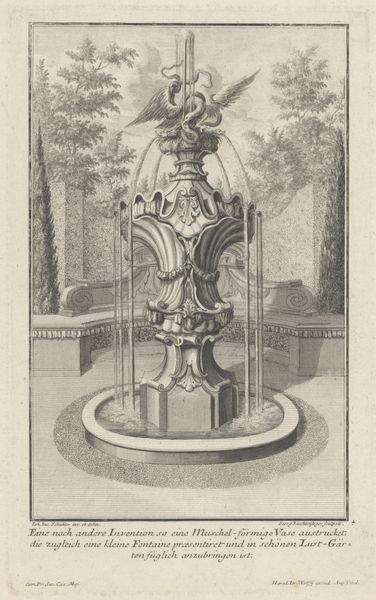
drawing, pencil, engraving
#
portrait
#
drawing
#
neoclacissism
#
figuration
#
form
#
pencil
#
line
#
engraving
Dimensions: height 482 mm, width 334 mm
Copyright: Rijks Museum: Open Domain
Editor: Here we have "Beeld van een Uil" or "Image of an Owl" by Leendert Springer, made before 1830, using pencil and engraving techniques. It's strikingly austere, a study in lines and form, isn’t it? What layers do you see at play here? Curator: Indeed. Notice how the owl, perched atop a neoclassical plinth, becomes a complex signifier. The owl, throughout history, has represented wisdom, but also darkness and prophecy. Editor: Yes, I was also intrigued by this choice of subject. Why place it on that kind of pedestal? Curator: The plinth, adorned with what appears to be a figure reminiscent of Diana or perhaps another Greco-Roman deity, hints at a deliberate construction of meaning. The owl, an attribute of Minerva, Roman goddess of wisdom, paired with another goddess suggests perhaps an invocation of multiple aspects of the divine feminine – wisdom, the hunt, the moon. Do you perceive a sense of authority being conferred? Editor: Definitely, but almost ironically. The owl looks quite stiff, doesn't it? Like knowledge fossilized. Curator: Precisely. And consider the drawing’s Neoclassical style – the emphasis on line, clarity, and rational form. It creates a sense of order. Is this perhaps an era trying to impose order onto a world of shifting beliefs? Editor: I hadn't thought of it that way. It makes you consider the artist's own relationship to tradition and knowledge. Curator: Exactly. Symbols are never fixed; their power resides in their adaptability and their capacity to evoke resonances across time and cultures. Editor: This has made me see that image as more than a simple representation; it’s a container of ideas. Curator: An iconographic treasure trove. And understanding how those ideas have transformed over time is crucial to interpreting its message today.
Comments
No comments
Be the first to comment and join the conversation on the ultimate creative platform.

